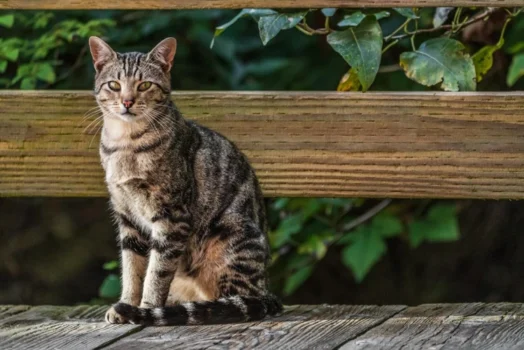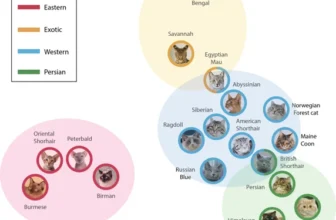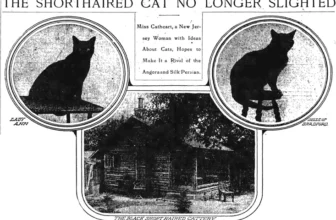Introduction
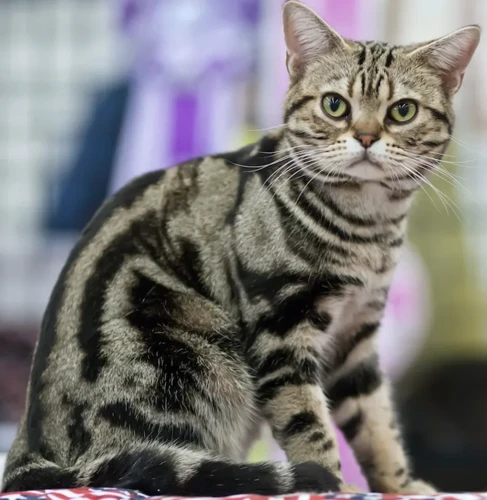
One of the fascinating aspects of feline breeds is understanding how they have evolved and developed over time. One such breed that has a unique history is the American Shorthair cat. Their journey has been one of standardization of certain physical and personality traits that have made them a popular breed worldwide. In this article, we will delve into the history and development of American Shorthair cats from their early days to modern times. We will explore the role of breeders, the effects of selective breeding, and how breed standards have contributed to making the American Shorthair what it is today.
Overview of American Shorthair Cats
American Shorthair cats are a popular breed of domestic cats known for their charming good looks and friendly personalities. They are highly adaptable and make excellent pets for families, individuals, and even seniors. Below is a table highlighting some key characteristics of the American Shorthair breed:
| Temperament | Affectionate, friendly, adaptable, social |
|---|---|
| Origin | United States |
| Weight | Male: 11-15 pounds; Female: 8-12 pounds |
| Life Expectancy | 12-16 years |
| Coat Type | Short, dense, and plush |
| Coat Colors | Wide variety including silver, brown, black, blue, cream, red, and more |
Although American Shorthair cats are typically known for their easy-going nature, each cat has a unique personality and temperament. Some cats may be more independent or energetic than others, and it’s important for potential owners to find a cat that fits their lifestyle and personality. Understanding the origins and characteristics of the American Shorthair breed can help in selecting the right cat for you.
For more information about the evolution and history of American Shorthair cats, check out our article on American Shorthair Breed Evolution. To learn about their genetic ancestry, click on Genetic Ancestry of American Shorthair Cats.
The History of American Shorthair Cats
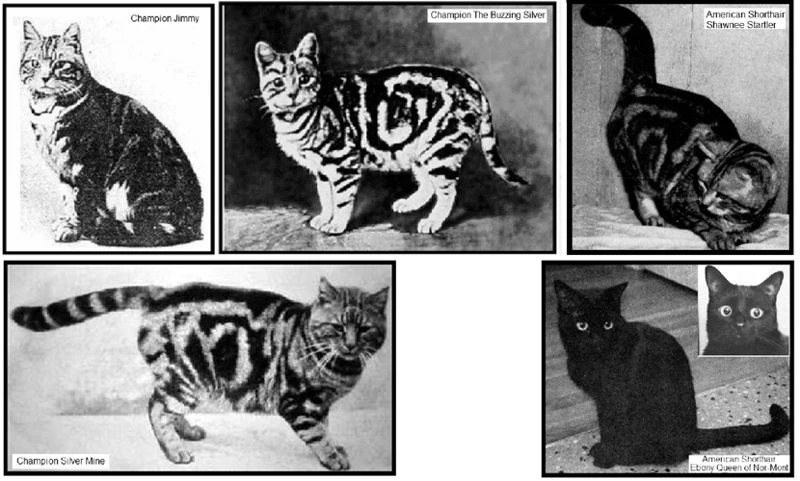
The American Shorthair cat breed is a beloved and popular pet in homes across America and beyond. But how did this breed come to be? The history of American Shorthair cats is a fascinating one, with the breed evolving and changing over time. From their earliest beginnings to modern day, the American Shorthair cat has a rich and captivating history. In this section, we’ll take a closer look at the journey of these feline creatures, including their domestication, evolution, and the influence of other cat breeds on their development.
Early Development of American Shorthair Cats
The American Shorthair cat breed can trace its roots back to the early days of North American settlement. The breed’s ancestors were cats that came over with early European settlers. These cats were bred with native American cats, creating a hybrid breed with a wide range of colors and patterns.
The 1800s
In the 1800s, these cats began to be recognized for their usefulness in controlling rodents around the farm. They were originally called “Domestic Shorthairs,” but was later changed to “American Shorthair” to give them a name that reflected their origins.
The Standardization of the Breed
In 1906, the first American Shorthair was registered with the CFA. The breed standards were revised in 1966, with official recognition of the breed following a year later in 1967. The breeders aimed to develop a cat with a well-muscled body, strong bones, and a thick tail.
The Influence of European Shorthair Cats
The European Shorthair cat also played a role in the development of the American Shorthair breed. European Shorthair cats were brought over to North America by early settlers and were bred with local cats. The resulting offspring played a role in the development of early American Shorthair cats.
The influence of European Shorthair cats can still be seen in the American Shorthair breed today. While they share many characteristics, there are distinct differences in the size and structure of the two breeds.
To learn more about the evolution of American Shorthair cats and their relationship with other domesticated felines, check out our article on the impact of domestication on American Shorthair cats.
Changes in Breed Standards
Changes in Breed Standards
American Shorthair cats have come a long way since their early developments. The breed standards for American Shorthair cats have undergone significant changes throughout history. Here are some of the most significant changes in breed standards:
- Head Shape: In the early stages of the breed’s development in America, the breed standard favored longer, more angular head shapes. Over time, breeders were able to show preference and evolve the breed standards to include a much rounder and broader head shape.
- Coat Colors: American Shorthair cats were originally bred for their hunting capabilities, which meant that the breed standard had to develop to favor cats with a specific type of coat that would maintain healthy hunting capabilities. Initially, the breed standard for American Shorthair cats only allowed for brown tabby and white furred cats. However, these standards expanded to include a wider variety of coat colors such as black, silver, and cream, to name a few.
- Eye Shape: American Shorthair cats were originally bred with more almond-shaped eyes and later developed to have a more rounded eye shape.
- Size and Shape: As American Shorthair cats evolved in America, breeders showed preference for cats that were more robust and muscular. The modern American Shorthair cat is medium-sized, muscular and heavily boned.
These changes in breed standards have enabled breeders to produce cats that are not only more visually appealing but are more adaptable, healthier, and provide great companionship. The breed has also experienced a great influence from European breeds which led to the rise of a new breed – ‘European Shorthair’. If you want to read more about the influence of European Shorthair cats on American Shorthair cats, visit “European Shorthair Cats’ Influence on American Shorthair Cats Throughout History”.
Defining Breed Standards
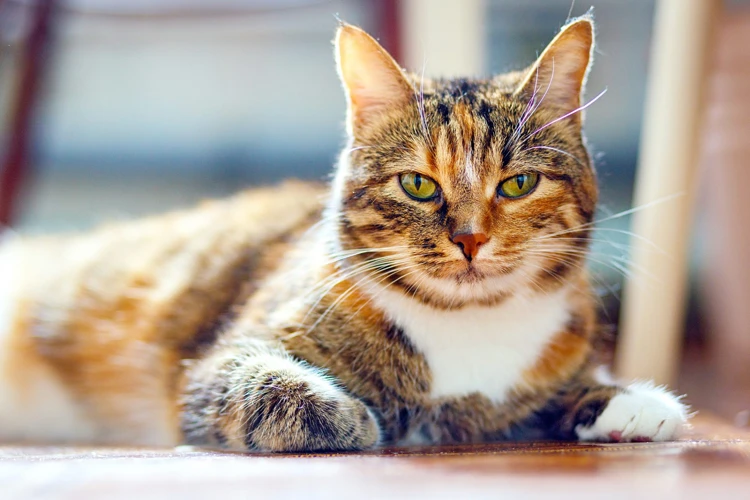
The standardization of breed traits is an essential aspect of any cat breed. In this section, we will discuss the process of defining breed standards for American Shorthair cats. These standards provide a clear understanding of the breed’s physical characteristics and personality traits. The American Shorthair breed has undergone significant changes in terms of breed standards, making it necessary to examine the development of these standards. Understanding the breed’s history and the role of breeders in standardization is critical to appreciate the breed’s uniqueness. For more information about the evolution of American Shorthair cats, click here. To learn about how American Shorthair cats compare to other breeds in their evolution, click here. And to read about breeding for health and genetic diversity, click here. Let’s delve into the defining breed standards for American Shorthair cats.
Physical Characteristics
The physical attributes of American Shorthair Cats have evolved throughout their history, and these traits have been standardized over time. Here are some of the key physical characteristics that have been used to define the breed:
- Size: American Shorthair cats are medium to large in size, with males typically weighing 11-15 pounds and females weighing 8-12 pounds.
- Coat: The coat of an American Shorthair cat is short and dense, with a thick undercoat. The fur comes in a variety of colors and patterns, including tabby, silver tabby, calico, and solid black, among others.
- Head: The head of an American Shorthair cat is round and wide, with a short snout and broad, distinctive cheeks. The eyes are large, round, and set wide apart.
- Ears: American Shorthair cats have medium-sized ears that are slightly rounded at the tips. They are set wide apart and sit upright on the head.
- Body: The body of an American Shorthair is muscular and athletic, with a broad chest, strong legs, and a short, thick tail. The overall body shape is square and sturdy, with a powerful appearance.
Breed standards dictate that American Shorthair cats should have a “bright and alert” expression, with a friendly and easygoing demeanor. While these physical traits help define the breed, it’s important to remember that each cat is unique and has its own personality and characteristics.
Temperament and Personality Traits
American Shorthair cats are renowned for their charming and friendly personalities. They are easygoing, affectionate, and love to be around humans. In this section, we will delve deeper into their temperament and personality traits.
Temperament Traits of American Shorthair Cats
American Shorthair cats have a calm and relaxed demeanor that makes them great companions at home. They are not usually high-strung or overly active. Instead, they tend to be quiet and reserved, preferring to watch the action rather than participate in it.
They are independent creatures and do not require constant attention. However, they do enjoy being petted and cuddled. Additionally, they have a curious nature and enjoy exploring their surroundings.
Personality Traits of American Shorthair Cats
American Shorthair cats are affectionate and loving towards their owners. They love spending time with their family members and will often follow them around the house. They are also good with children and other pets, making them a great addition to any household.
They are intelligent creatures and can be trained to perform simple tasks. They are also notoriously independent and can be a bit stubborn at times.
American Shorthair cats are a great breed to have as pets due to their friendly personality traits and easy-going nature. They make great companions for individuals, families, and even other pets.
Modern American Shorthair Cats
As breeds of cats have evolved over time, the American Shorthair cat has also undergone significant changes. With the help of selective breeding, the American Shorthair cat has developed into a popular breed admired for its versatility and amiable personality. Today, this breed has reached new heights in appearance, health, and temperament. In this section, we will explore how breeders have continued to improve the American Shorthair cat, ensuring that it remains a beloved breed for many years to come.
The Role of Breeders in Breed Standardization
Breeders play a crucial role in maintaining and shaping the breed standards of American Shorthair cats. It is up to the breeders to ensure that their cats exhibit the correct physical traits and temperament required by the breed standard. Some of the key ways in which breeders contribute to breed standardization include:
- Selective Breeding: Breeders selectively breed American Shorthair cats with desirable traits that conform to the breed standard, thus enhancing the breed’s overall quality and ensuring that the characteristics of the breed are preserved over time.
- Collaboration: Breed societies and clubs work together with breeders to create and enforce the breed standards. The clubs and societies organize shows where breeders can showcase their cats and help to establish the ideal breed characteristics.
- Education: Experienced breeders play a pivotal role in educating new breeders about the breed standard, offering tips, and providing support on how to improve their cats’ qualities while maintaining the breed characteristics.
- Lineage: Breeders keep comprehensive records of their cats’ lineage to track the traits and qualities passed on from one generation to another. This allows breeders to identify any deviations from the breed standard and correct them as necessary.
It’s important to note that breeders have a moral and ethical responsibility to prioritize the health and well-being of American Shorthair cats. They should ensure that their breeding practices do not compromise the cats’ health, genetic diversity, and overall quality of life. In essence, breeders hold the key to the preservation and standardization of the American Shorthair cat breed, and their work is critical in ensuring that the breed continues to thrive for generations to come.
Breeding for Health and Genetic Diversity
In recent years, there has been a growing emphasis on breeding for health and genetic diversity among American Shorthair cats. Breeders are now more conscious of the need to reduce the incidence of genetic disorders and produce cats that are generally healthier.
To achieve this, breeders have been incorporating new bloodlines into their breeding programs. This helps to introduce new genes and reduce the risks of inherited diseases. It also helps to increase the genetic diversity of the breed, which not only improves overall health but also ensures that the breed remains a strong and viable one.
Another strategy used by breeders is to conduct genetic testing on their breeding cats to identify any potential health issues that may be present. This enables them to exclude cats carrying harmful mutations from their breeding programs and ensure that only the healthiest cats are used for breeding.
Breeders are also increasingly using selective breeding to produce American Shorthair cats with specific traits, such as a friendly and affectionate personality or a particular coat color. However, it is important to strike a balance between producing cats with desirable traits and producing cats that are healthy and genetically diverse.
Breeding for health and genetic diversity is crucial to ensuring the long-term success and sustainability of the American Shorthair breed. With careful breeding practices and a focus on producing healthy cats with a range of desirable traits, breeders can help ensure that the American Shorthair remains a beloved and robust breed for years to come.
- Breeding for health and genetic diversity is a growing trend in American Shorthair breeding.
- Breeders are adding new bloodlines to reduce genetic diseases and increase genetic diversity.
- Genetic testing is increasingly done to exclude cats carrying harmful mutations from breeding programs.
- Selective breeding is used to produce American Shorthair cats with specific traits, but a balance must be struck with health and genetic diversity.
- Breeding for health and genetic diversity is crucial for the long-term success and sustainability of the breed.
Conclusion
In conclusion, the development and standardization of breed traits in American Shorthair cats have been shaped by various factors throughout history. From their early origins as working cats brought over by European settlers, to their modern-day refinement through selective breeding and breed standards, American Shorthair cats have become a beloved breed among cat enthusiasts. Particular attention has been paid to their physical characteristics, such as their coat patterns and eye color, as well as their temperament and personality traits, which make them good companions for families, singles, and seniors alike. Breeders have played a crucial role in advancing the breed and promoting genetic diversity for the overall health of the breed.
As we continue to appreciate and value American Shorthair cats, it is essential to remember that their development and breeding should prioritize their health, well-being, and unique characteristics. By striving towards genetic diversity and selective breeding practices that prioritize the welfare of the cats instead of solely relying on appearance, we can ensure the longevity and continued improvement of this beloved breed. Overall, American Shorthair cats have a rich history, fascinating journey, and a bright future ahead of them as one of the most beloved feline breeds worldwide.
Frequently Asked Questions
What makes American Shorthair cats unique?
American Shorthair cats are known for their affectionate nature, adaptability, and intelligence. They also have a sturdy build and a distinctive round face.
How did American Shorthair cats become a recognized breed?
American Shorthair cats were first recognized as a breed by the Cat Fanciers’ Association in 1906. This was due in part to the efforts of breeders who were working to standardize the breed.
What were early American Shorthair cats used for?
Early American Shorthair cats were used as working cats on ships and farms. They were prized for their ability to hunt rodents and keep barns and ships free of pests.
What changes have been made to the breed standard over time?
The breed standard for American Shorthair cats has changed over time to reflect new trends and preferences. For example, the original standard favored cats with a more slender build, while modern standards call for a more muscular cat with a round head.
What physical characteristics are important in American Shorthair cats?
American Shorthair cats should be medium to large in size, with a sturdy build and a smooth coat. They should have a round head, full cheeks, and a broad, straight nose.
What personality traits are common in American Shorthair cats?
American Shorthair cats are known for being friendly, outgoing, and affectionate. They are also highly adaptable and are able to adjust to a wide variety of living situations.
What is the role of breeders in standardizing American Shorthair cats?
Breeders have played a crucial role in standardizing American Shorthair cats by selectively breeding cats that meet the desired characteristics outlined in the breed standard. They also work to maintain genetic diversity and prevent inbreeding.
What health concerns are common in American Shorthair cats?
Some health concerns that are common in American Shorthair cats include obesity, hip dysplasia, and heart disease. Responsible breeders work to screen their cats for these and other potential health issues.
How can I find a reputable breeder of American Shorthair cats?
To find a reputable breeder of American Shorthair cats, start by doing research online. Look for breeders who are members of reputable cat associations and who have a track record of producing healthy, well-socialized kittens.
What should I look for when choosing an American Shorthair cat?
When choosing an American Shorthair cat, look for a cat who is well-built and muscular, with a round head and full cheeks. The cat should be friendly and outgoing, and should have a healthy coat and clear eyes.

